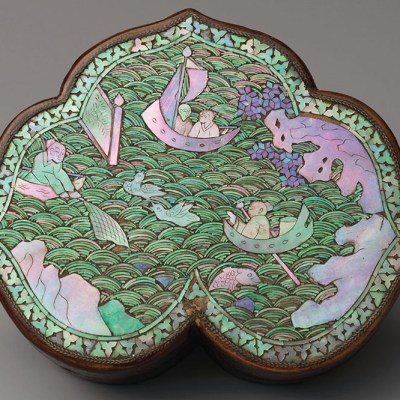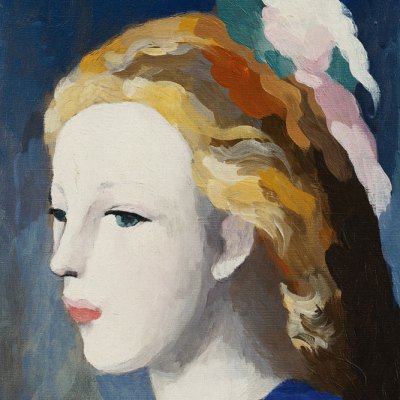From the May 2025 issue of Apollo. Preview and subscribe here.
When the Veterans Room at the Park Avenue Armory was unveiled in 1881, the New York Times declared it ‘undoubtedly the most magnificent apartment of the kind in this country’. The room made of stained glass, mosaic, ironwork and carved wood was created by leading designers and craftspeople associated with the American Aesthetic movement: Louis Comfort Tiffany, Stanford White, Candace Wheeler, Lockwood de Forest and Samuel Colman. The result of their collaboration was described by one contemporary observer as ‘Greek, Moresque, and Celtic, with a dash of the Egyptian, the Persian and the Japanese.’ It’s fitting, then, that this – and the rest of the building’s suite of period rooms – will soon house an equally eclectic mix of fine and decorative arts for TEFAF New York.
Of the 91 galleries exhibiting at the fair, some 20 booths will appear here; the rest will fill the cavernous Wade Thompson Drill Hall. The use of the historic rooms (described by the New York Landmarks Conservancy as the ‘single most important collection of 19th-century interiors to survive intact in one building’) is a privilege afforded only to TEFAF. Situating one’s wares in this maximalist environment can come with its challenges – Axel Vervoordt, the master of minimal decor in muted tones, is among those showing in these rooms. This year, nearly 15 per cent of exhibitors are new to the fair; almost half of the newcomers are from London, including David Aaron, Ben Hunter, and Annely Juda Fine Art.
Louis Comfort Tiffany’s contribution to the Veterans Room are its windows of blue-green stained glass. He might have been pleased to know his work was still finding favour under the Armory’s crenellated roof: an example of one of his most highly sought-after lamp designs, produced in 1905, will be on show with DeLorenzo Gallery. The Tiffany Wisteria lamp features a trunk-like bronze stand, like a wisteria vine trained into a ‘standard’, or tree-like form. Its shade of cascading blossom, formed of some 2,000 pieces of leaded stained glass, is unusual for the naturalism of its ragged edge. Though in design and subject it recalls the Japanese decorative arts so important to Tiffany as both designer and collector, recent research has shown Wisteria to be the invention of one Clara Driscoll, head of the all-women glass-cutting team known as ‘the Tiffany Girls’.
Wisteria table lamp (c. 1905) designed by Tiffany Studios. Courtesy DeLorenzo Gallery
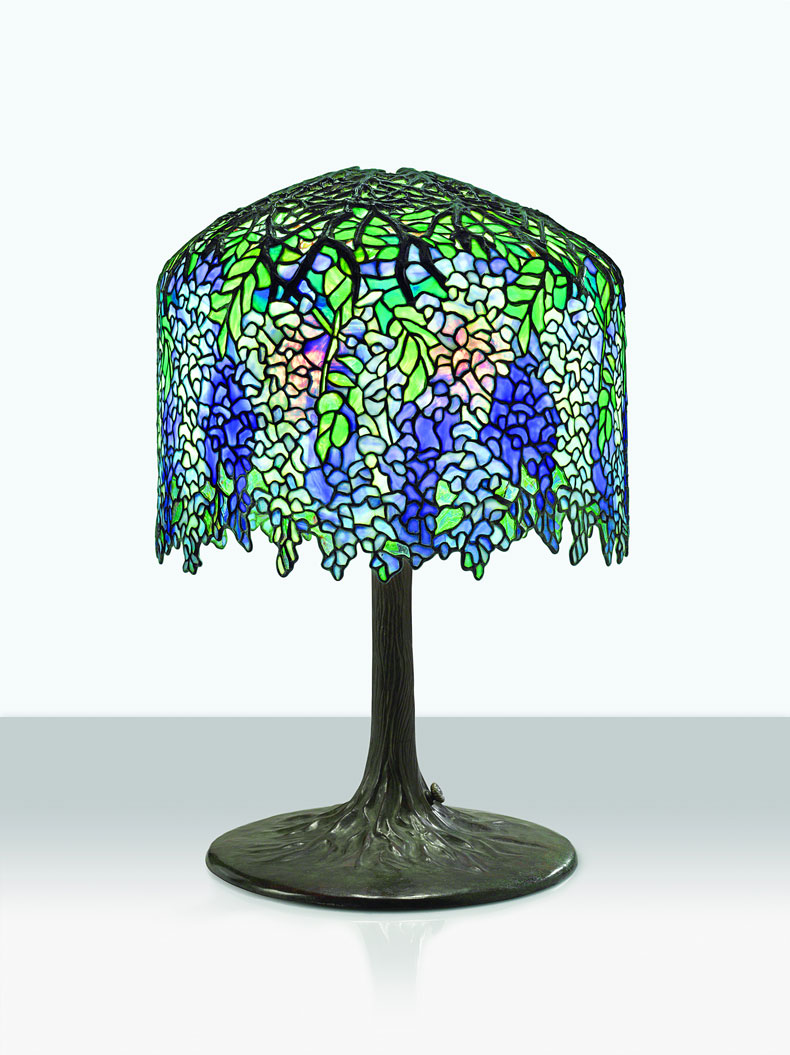
Two years after the unveiling of the Veterans Room, Candace Wheeler – often dubbed ‘the mother of interior design’ – founded her own firm, Associated Artists, which focused on employing female artisans. As a pioneer credited with opening the interior design profession to women, Wheeler may well have appreciated the abundance of work by female artists and designers now on show in the Armory.
Unlike Driscoll, whose contribution remained unacknowledged for some 100 years, many of the women represented here are glittering figures. These include the painter of sapphic daydreams Marie Laurencin, whose characteristically pastel-hued Young girl with a bouquet (c. 1935) is being offered by Almine Rech. Others have their stars in the ascendant, such as Emma Reyes, the self-taught Colombian artist who painted flowers with all the personality of a portrait; her O’Keeffe-esque White Poppy (1979) is on show with Leon Tovar Gallery.
Alongside the fine art there is, of course, plenty of design on offer too. A skulking bronze Baboon Bench (1999) by Judy Kensley McKie has all the charm of Les Lalanne’s equally whimsical furniture. One of the most striking pieces of the fair can be found at David Gill Gallery: Zaha Hadid’s Liquid Glacial (2012) is a coffee table of clear blue acrylic so deliquescent, it appears to be trickling away. If you prefer something more reassuring, it doesn’t get much more solid than a 1954 desk in ash and black formica by Charlotte Perriand, on show with Laffanour/Galerie Downtown.
White Poppy (1979), Emma Reyes. Courtesy Leon Tovar Gallery
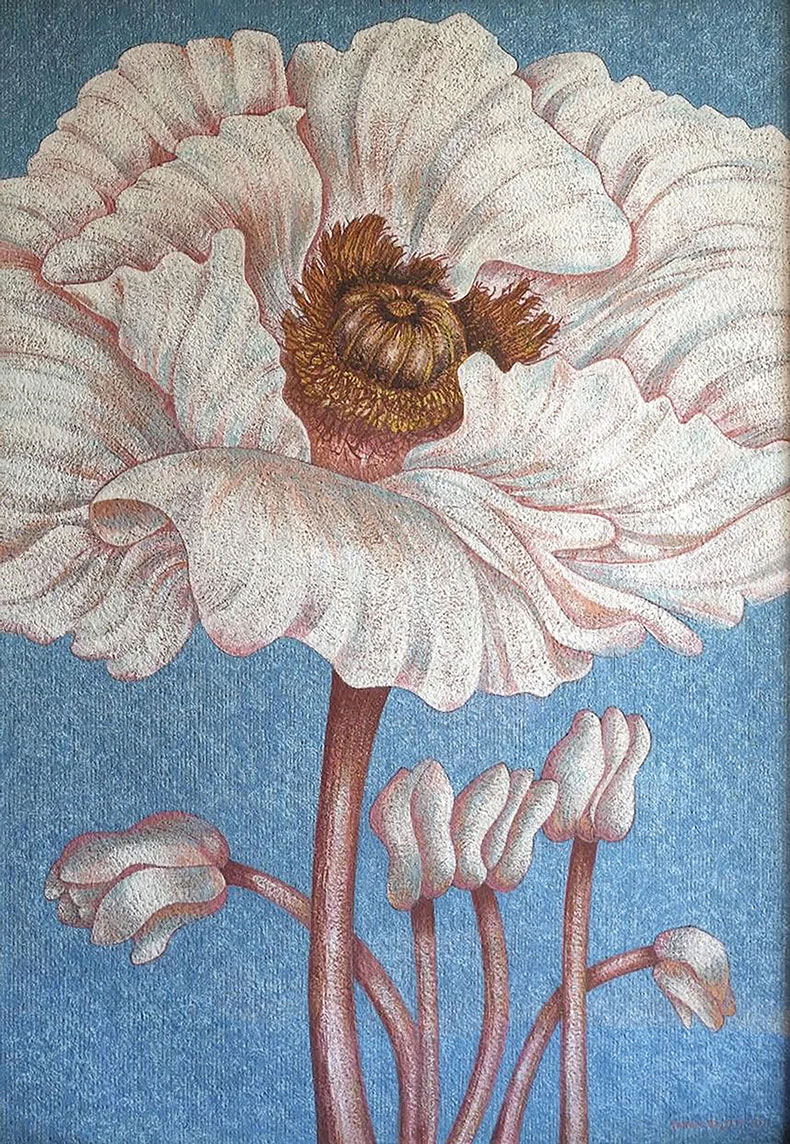
Elsewhere in the fair, echoes of the building’s recent history can be found. At Sprüth Magers’ booth, various bronze bas-reliefs by Anne Imhof – such as Untitled (Silas) (2024), a scene of embracing androgynous figures – are a far cry from the spectacle the Armory commissioned from the artist for its Wade Thompson Drill Hall. This March, DOOM: House of Hope filled the 55,000-square-metre space with an immersive three-hour piece featuring dozens of performers dressed as cheerleaders, jocks, skaters and sports mascots, hanging out on the roofs of 24 Cadillac Escalades. Critics may have been divided over DOOM, but it’s unlikely that Imhof’s more decorous bronzes will alienate anyone. Sculpted in a pan-historical style with something of the Renaissance about them, one could even imagine them sitting nicely in the Veterans Room.
With the wide range of work on show comes the opportunity to draw unexpected connections across time and space. Consider, for instance, the striking aesthetic similarities between the Roman head of a bearded god (on view with Charles Ede) and Masque coiffure by Giacometti (Galerie Marcilhac), commissioned by the interior designer Jean-Michel Frank. One created in marble in the second century AD, the other in plaster in c. 1933, both are crowned with curls in remarkably similar compositions.
Elsewhere, it’s the provenance that can be as noteworthy as the piece itself. At Galerie Lucas Ratton, a Guro mask from Côte d’Ivoire depicting a female protective figure was once owned by Maurice de Vlaminck. Heavily patinated and exquisitely carved, it is a striking object – equal parts elegant and powerful – but arguably it is the connection to the Fauvist painter that sets it apart. Though Vlaminck did not incorporate African influences into his painting to the same degree as contemporaries such as Picasso, he was a passionate collector – even claiming, in 1906, to have been the first Western artist to have ‘discovered’ African statuettes and masks. The mask once belonging to Vlaminck is redolent of a moment in art history – one of myriad such stories to be found at the fair.
Baboon Bench (1999), Judy Kensley McKie. Photo: © Judy Kensley McKie; courtesy DeLorenzo Gallery; © Judy Kensley McKie
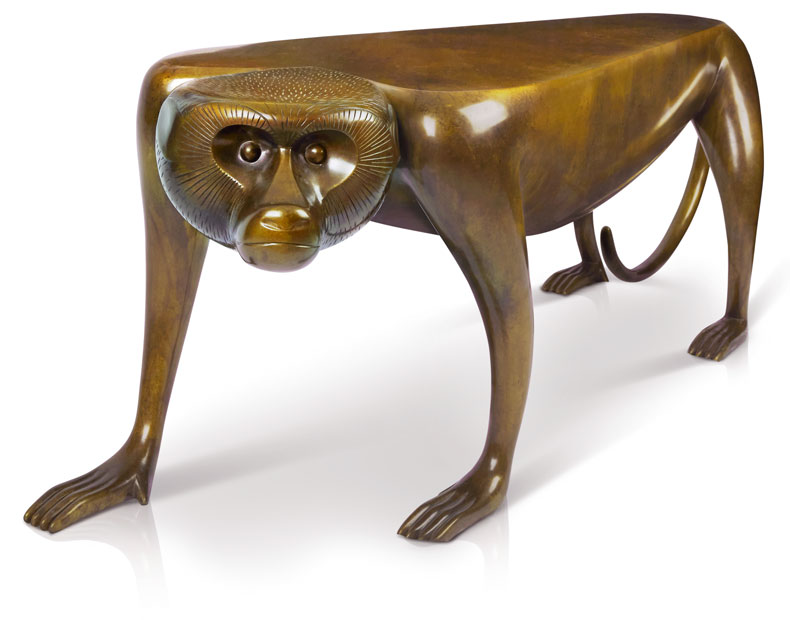
TEFAF New York is at the Park Avenue Armory, New York, from 9–13 May.
From the May 2025 issue of Apollo. Preview and subscribe here.


